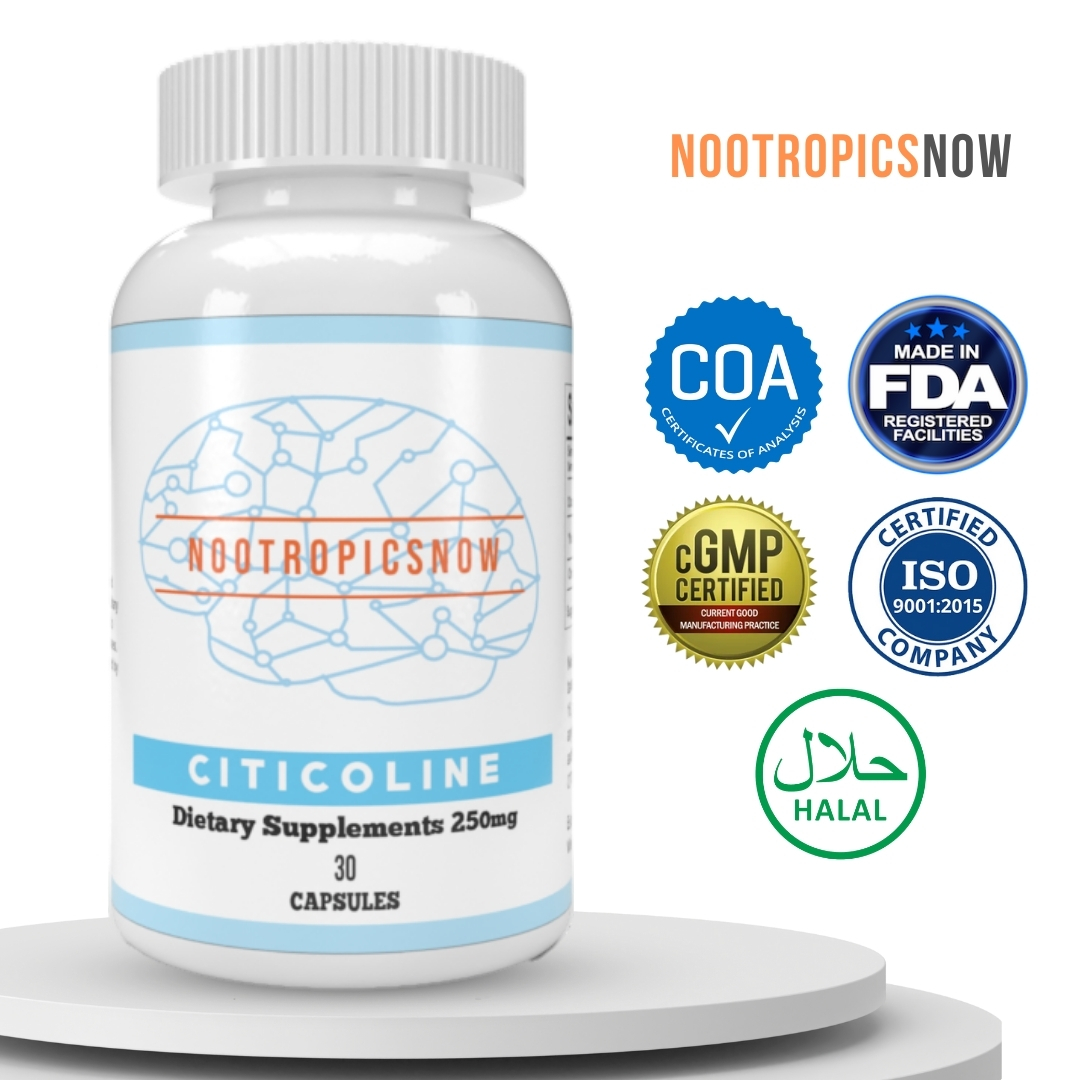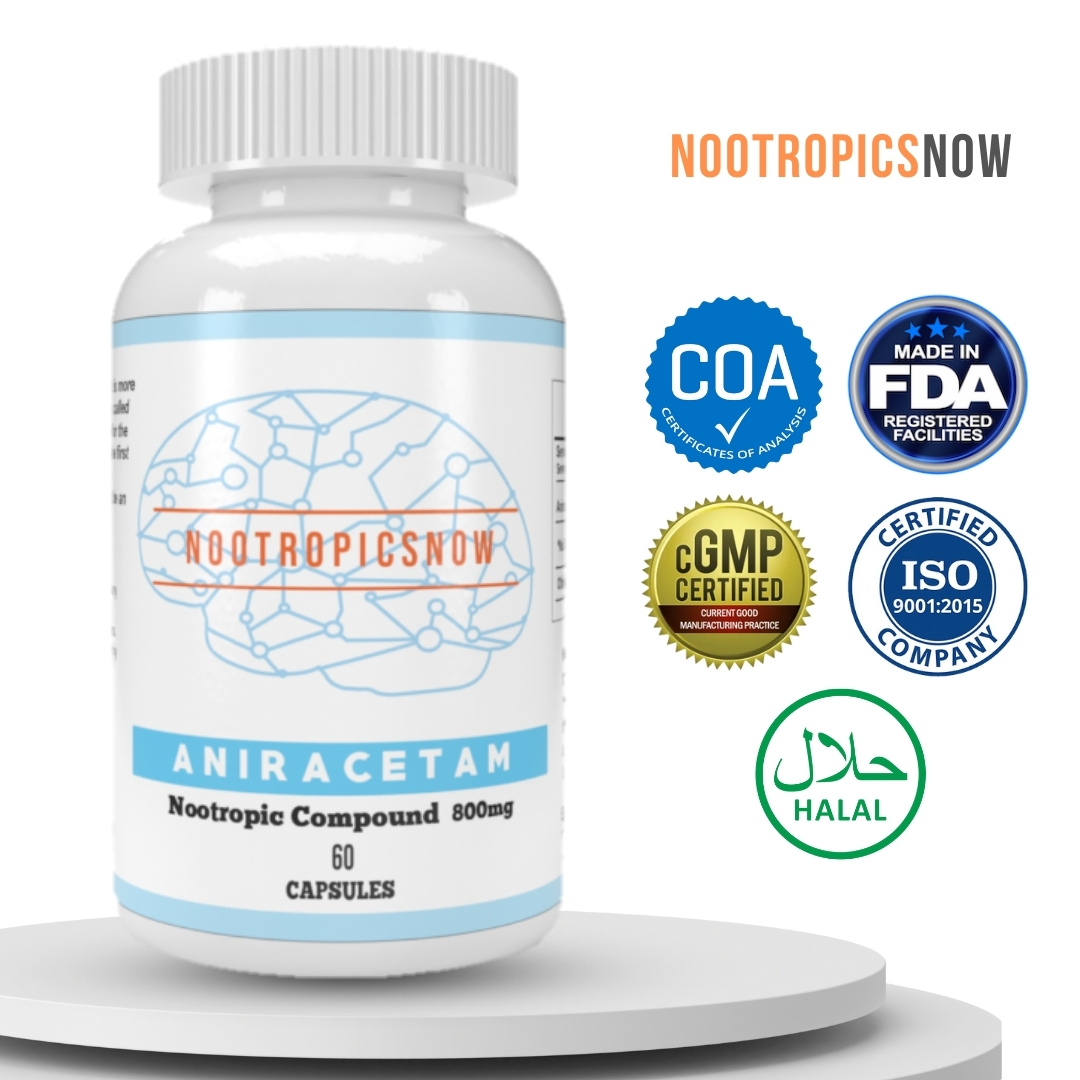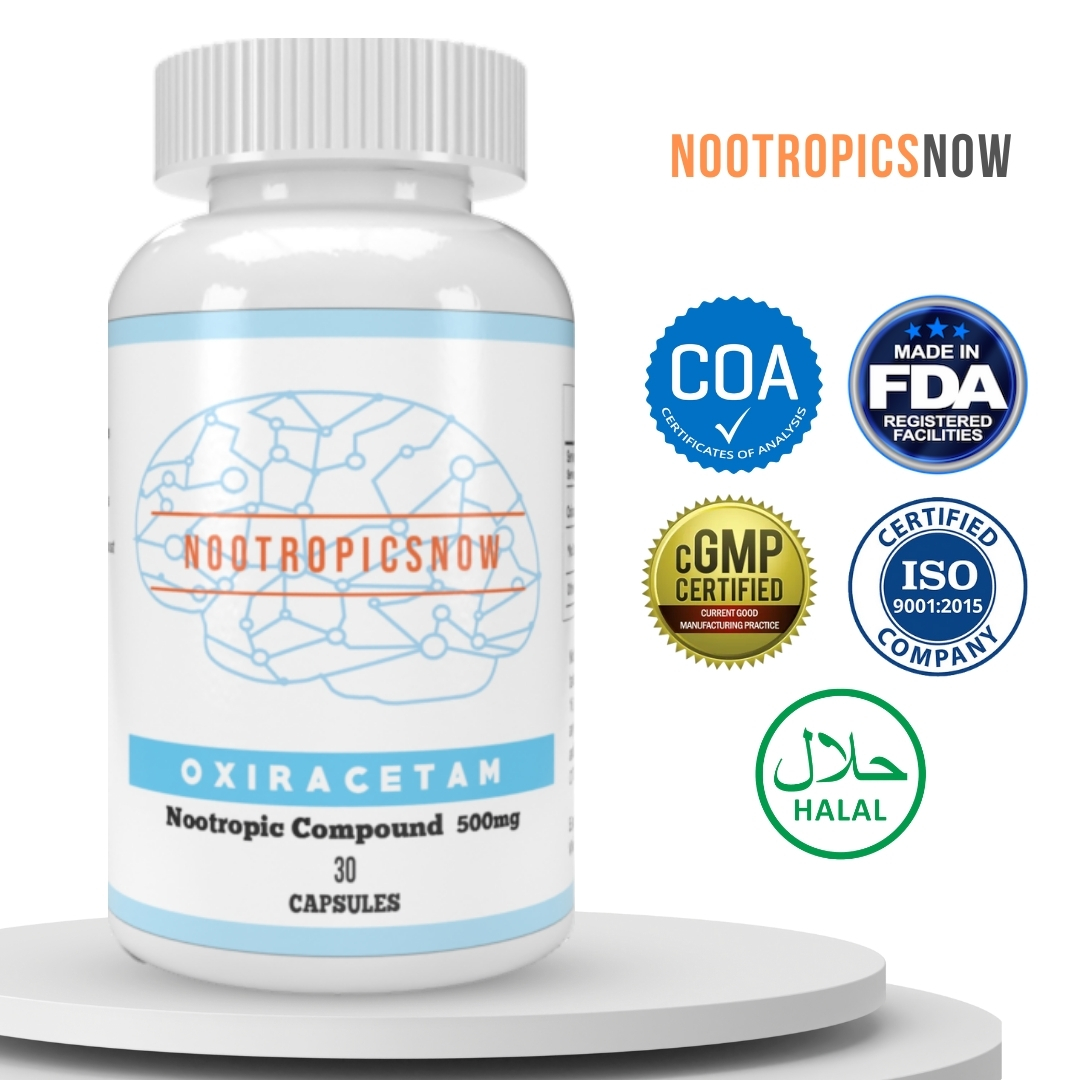Aniracitam: Meaning & Usage Explained

Aniracetam: Unlocking Cognitive Potential
Aniracetam is a nootropic compound, meaning it’s designed to enhance cognitive function. Specifically, it belongs to the racetam family, a group of synthetic compounds sharing a pyrrolidone structure and known for their purported cognitive-enhancing effects. It’s significantly more potent than its predecessor, piracetam. Users commonly seek it to improve memory, focus, and learning capacity. Its potential anxiolytic (anxiety-reducing) properties also make it an interesting candidate for those seeking enhanced mental well-being.
History and Development of Aniracetam

Synthesized in the 1970s by Hoffmann-La Roche, a Swiss pharmaceutical giant, aniracetam quickly gained attention for its potential cognitive benefits. Initially studied for its effects on cognitive decline associated with aging and neurological disorders, it has since become a popular choice among individuals seeking to optimize their mental performance. Consequently, it is marketed under several brand names, including Draganon, Sarpul, and Ampamet, across different regions.
Chemical Structure and Properties
Chemically, aniracetam is a 1-p-anisoyl-2-pyrrolidinone. Its structure features a pyrrolidone ring, a common feature among racetam nootropics, along with an anisoyl group. This unique molecular arrangement contributes to its lipophilic (fat-soluble) nature. Being fat-soluble impacts how it’s absorbed and metabolized within the body. Moreover, it influences its ability to cross the blood-brain barrier, a protective layer that regulates the passage of substances into the brain.
How Aniracetam Works: Mechanisms of Action
Aniracetam exerts its cognitive effects through multiple mechanisms. Primarily, it interacts with key neurotransmitter systems in the brain. Understanding these interactions sheds light on how it improves cognitive functions.
1. Acetylcholine Modulation
Acetylcholine (ACh) is a vital neurotransmitter involved in memory, learning, and attention. Aniracetam enhances cholinergic activity, meaning it boosts the levels and signaling of ACh. It achieves this by:
2. Glutamate Receptor Modulation
Glutamate is the primary excitatory neurotransmitter in the brain and is essential for synaptic plasticity, a process underlying learning and memory. Aniracetam primarily targets AMPA receptors, a subtype of glutamate receptor. By modulating AMPA receptors, it:
3. Modulation of Dopamine and Serotonin Systems
Beyond acetylcholine and glutamate, aniracetam also influences dopamine and serotonin levels. These neurotransmitters play critical roles in mood regulation, motivation, and overall well-being. By modulating these systems, aniracetam may:
Cognitive Benefits of Aniracetam: What to Expect
Users report a range of cognitive benefits associated with aniracetam supplementation. While individual experiences can vary, common benefits include:
1. Enhanced Memory and Learning
One of the primary reasons individuals use aniracetam is to improve memory and learning capacity. It may help:
2. Improved Focus and Concentration
Aniracetam can also improve focus and concentration, making it easier to stay on task and avoid distractions. This can be particularly beneficial for:
3. Enhanced Cognitive Processing Speed
Cognitive processing speed refers to the speed at which the brain can process information. Aniracetam may help:
4. Anxiolytic Effects and Mood Enhancement
Some users report anxiolytic (anxiety-reducing) effects and mood enhancement with aniracetam. This can be particularly helpful for:
Aniracetam Dosage and Administration
Finding the correct dosage is crucial to achieving optimal benefits while minimizing potential side effects. Individual responses can vary, so it’s often recommended to start with a lower dose and gradually increase it as needed.
General Dosage Guidelines:
Administration Tips:
Potential Side Effects and Safety Precautions
While generally well-tolerated, aniracetam can cause side effects in some individuals. It’s essential to be aware of these potential side effects and take appropriate precautions.
Common Side Effects:
Precautions:
Aniracetam Stacks: Combining with Other Nootropics
Many users combine aniracetam with other nootropics to enhance its cognitive effects. This is known as “stacking.” Some popular aniracetam stacks include:
1. Aniracetam and Choline
As mentioned earlier, taking aniracetam with a choline supplement can help prevent headaches and enhance its cholinergic effects. Popular choline sources include:
2. Aniracetam and Oxiracetam
Combining aniracetam with oxiracetam can create a synergistic effect, improving both memory and focus. This combination may enhance overall cognitive performance.

View Product
3. Aniracetam and Noopept
Noopept is another potent nootropic that enhances cognitive function and neuroprotection. Stacking with aniracetam may create a synergistic effect. However, given Noopept’s potency, starting with lower doses of both substances is advisable.

View Product
4. Aniracetam and Caffeine
Combining aniracetam with caffeine can provide a boost in energy and focus. However, use caution, as this combination can increase anxiety in some individuals.
Legal Status and Availability
The legal status of aniracetam varies by country. In some countries, it is available as a prescription medication, while in others, it is sold as a dietary supplement.
Where to Buy Aniracetam
Aniracetam can be purchased from various sources, including:
User Experiences and Reviews
Online forums and communities dedicated to nootropics are filled with user experiences and reviews of aniracetam. Reading these reviews can provide valuable insights into its effects and potential benefits. However, keep in mind that individual experiences can vary, and what works for one person may not work for another.
The Future of Aniracetam Research
Ongoing research continues to explore the potential applications of aniracetam in various areas. This includes investigating its effects on cognitive decline associated with aging, neurological disorders, and even mental health conditions. As more research emerges, our understanding of its mechanisms of action and therapeutic potential will continue to grow.
Aniracetam and Neuroplasticity
A key area of interest in nootropic research is neuroplasticity, the brain’s ability to reorganize itself by forming new neural connections throughout life. This is crucial for learning, memory, and recovery from brain injury. Aniracetam’s modulation of glutamate receptors, particularly AMPA receptors, plays a significant role in promoting neuroplasticity. By enhancing synaptic transmission and long-term potentiation (LTP), it facilitates the formation of new neural connections and strengthens existing ones.
Conclusion: Is Aniracetam Right for You?
Aniracetam is a promising nootropic with the potential to enhance memory, focus, and cognitive processing speed. Its anxiolytic properties may also make it beneficial for improving mood and reducing anxiety. However, it’s essential to approach aniracetam with caution. Begin with a low dose, monitor your response, and consult with a healthcare provider if you have any underlying health conditions or are taking other medications. With careful consideration and responsible use, aniracetam may be a valuable tool for optimizing cognitive function and achieving your mental potential.

View Product
Aniracetam: A Deep Dive into Benefits, Uses, and Side Effects
Aniracetam stands as a popular synthetic nootropic belonging to the racetam family. Initially developed in the 1970s by Hoffmann-La Roche, this compound has garnered attention for its potential cognitive-enhancing properties. It is structurally similar to piracetam, the original racetam, but boasts a significantly higher potency. This characteristic makes aniracetam a subject of interest for individuals seeking to improve memory, focus, and overall cognitive function. Therefore, exploring aniracetam requires a comprehensive understanding of its benefits, mechanisms of action, potential side effects, and the available research.
Understanding Aniracetam
Aniracetam, chemically known as 1-p-anisoyl-2-pyrrolidinone, differs significantly from its predecessor, piracetam, in terms of lipid solubility. Aniracetam exhibits higher lipid solubility, allowing it to cross the blood-brain barrier more efficiently. Consequently, it typically requires lower dosages to achieve noticeable effects. This enhanced bioavailability makes it a favorite among nootropic users looking for a more potent cognitive boost.
Chemical Properties
Aniracetam’s chemical formula is C12H13NO3, with a molar mass of 219.24 g/mol. It appears as a white to off-white crystalline powder. Its solubility in lipids is a key factor contributing to its rapid absorption and effects.
Common Brand Names
Aniracetam is marketed under several brand names across the globe. These include Draganon, Sarpul, Ampamet, Memodrin, and Referan. Depending on the region, availability and regulatory status vary.
Benefits of Aniracetam
Users and researchers have reported numerous potential benefits associated with aniracetam. These cognitive improvements span multiple domains, thus making it a versatile nootropic agent.
Cognitive Enhancement
One of the primary reasons individuals turn to aniracetam is its potential to enhance cognitive function. Users report improved memory consolidation, increased learning capacity, and heightened focus. Aniracetam appears to improve the efficiency of neural communication, thereby facilitating improved information processing and cognitive performance.
Mood Enhancement
Unlike some stimulants that may cause anxiety or jitteriness, aniracetam is often associated with mood elevation and reduced anxiety. Its interaction with neurotransmitters like serotonin and dopamine may contribute to these effects. Many users find aniracetam helpful in alleviating symptoms of social anxiety.
Enhanced Sensory Perception
Some users describe experiencing heightened sensory perception while using aniracetam. This includes increased vividness in visual and auditory experiences. This effect may be due to aniracetam’s influence on the brain’s sensory processing centers.
Improved Verbal Fluency
Individuals often report improved verbal fluency and ease of communication while using aniracetam. This enhanced ability to articulate thoughts may be beneficial in professional and social settings. This could be attributed to aniracetam’s modulation of neurotransmitters involved in language processing.
How Aniracetam Works
The mechanisms underlying aniracetam’s cognitive effects are complex and multifaceted. While the exact mechanisms are still under investigation, several key pathways are believed to contribute to its benefits.
Acetylcholine Modulation
Aniracetam is thought to enhance the release and utilization of acetylcholine, a crucial neurotransmitter involved in learning, memory, and attention. It achieves this by binding to acetylcholine receptors and increasing their sensitivity to acetylcholine. Boosting acetylcholine levels can improve cognitive processes reliant on this neurotransmitter.
AMPA Receptor Modulation
Aniracetam also modulates AMPA receptors, a type of glutamate receptor involved in synaptic plasticity and learning. By enhancing the activity of AMPA receptors, aniracetam may improve the brain’s ability to form new connections and strengthen existing ones. This mechanism is essential for long-term potentiation and memory consolidation.
Dopamine and Serotonin Influence
Aniracetam influences the dopamine and serotonin neurotransmitter systems. The effects on these systems are thought to contribute to its anxiolytic and mood-enhancing properties. Modulating dopamine and serotonin may help regulate emotional states and promote a sense of well-being.
Neuroprotective Effects
Research suggests that aniracetam may possess neuroprotective properties. It can potentially shield brain cells from damage caused by oxidative stress and excitotoxicity. These protective effects are particularly relevant in neurodegenerative conditions.
Dosage and Administration
Determining the correct dosage of aniracetam is crucial for maximizing its benefits while minimizing potential side effects.
Recommended Dosage
The standard dosage of aniracetam typically ranges from 750mg to 1500mg per day, divided into two or three doses. Due to its relatively short half-life, multiple doses throughout the day are often recommended to maintain consistent cognitive effects.
Administration Tips
Aniracetam is fat-soluble, meaning it should be taken with a meal or snack containing fats to enhance absorption. Taking aniracetam on an empty stomach may result in reduced bioavailability and less noticeable effects. Consider consuming it with foods high in healthy fats like nuts, avocados, or olive oil.
Cycling
Some users advocate for cycling aniracetam to prevent tolerance and maintain its effectiveness. A common approach involves taking aniracetam for a few weeks, followed by a one-week break. Cycling can help the brain remain responsive to the nootropic’s effects over time.
Potential Side Effects and Precautions
While aniracetam is generally considered safe, it is important to be aware of potential side effects and take necessary precautions.
Common Side Effects
The most commonly reported side effects of aniracetam include headaches, anxiety, nausea, and insomnia. These side effects are generally mild and transient, often subsiding with continued use or dosage adjustment.
Choline Supplementation
Headaches are a common side effect of aniracetam, often attributed to increased acetylcholine demand in the brain. Supplementing with a choline source, such as Alpha-GPC or CDP-choline, can help alleviate this side effect. Choline provides the necessary building blocks for acetylcholine synthesis.
Here are a couple of choline source options to consider:

View Product

View Product
Precautions
Individuals with liver or kidney problems should exercise caution when using aniracetam, as it is metabolized by the liver and excreted by the kidneys. Pregnant or breastfeeding women should avoid aniracetam due to limited safety data in these populations.
Drug Interactions
Aniracetam may interact with other medications, particularly those affecting liver enzymes (CYP450 enzymes) or blood thinners. It is crucial to consult with a healthcare professional before using aniracetam if you are taking any other medications.
Stacking Aniracetam
Stacking involves combining different nootropics to enhance their effects synergistically. Aniracetam is often stacked with other nootropics to optimize cognitive performance.
Popular Stacks
One popular stack involves combining aniracetam with a choline source, such as Alpha-GPC or CDP-choline. This combination can improve memory and cognitive function while preventing headaches.
Another popular option includes combining Aniracetam with Lions Mane for boosted focus.

View Product
Benefits of Stacking
Stacking can amplify the cognitive benefits of aniracetam and address potential side effects. By combining different nootropics with complementary mechanisms of action, users can achieve a more comprehensive and balanced cognitive enhancement.
Cautions when Stacking
When stacking nootropics, it is essential to start with low dosages and gradually increase them as needed. Monitoring for any adverse effects and making adjustments to the stack is crucial. Combining too many nootropics simultaneously can increase the risk of side effects and make it difficult to determine which compounds are responsible for specific effects.
Aniracetam vs. Other Racetams
Aniracetam belongs to the racetam family, which includes other popular nootropics like piracetam, oxiracetam, and pramiracetam. Each racetam has unique properties and effects.
Comparison Chart
| Racetam | Key Benefits | Potency | Lipid Solubility | Primary Mechanism |
|---|---|---|---|---|
| ————– | ———————————- | —————- | ——————- | ————————————– |
| Piracetam | Memory enhancement, neuroprotection | Low | Low | Modulates acetylcholine receptors |
| Aniracetam | Cognitive enhancement, mood boost | Moderate | High | Modulates acetylcholine & AMPA receptors |
| Oxiracetam | Enhanced focus, cognitive speed | Moderate | Moderate | Modulates acetylcholine & AMPA receptors |
| Pramiracetam | Memory consolidation, learning | High | High | Modulates acetylcholine receptors |
Choosing the Right Racetam
The best racetam for an individual depends on their specific goals and preferences. Aniracetam is a good choice for those seeking both cognitive enhancement and mood elevation.

View Product
Piracetam is a milder option for individuals new to nootropics. Oxiracetam may be preferable for enhancing focus and cognitive speed. Pramiracetam is often chosen for its potent memory-enhancing effects.

View Product
Research and Studies
Numerous studies have investigated the effects of aniracetam on cognitive function and neurological conditions.
Clinical Trials
Clinical trials have explored aniracetam’s efficacy in treating conditions such as Alzheimer’s disease, dementia, and cognitive impairment following stroke. Some studies have shown promising results, with improvements in memory, attention, and overall cognitive performance. However, more extensive research is needed to confirm these findings.
Animal Studies
Animal studies have provided insights into the mechanisms underlying aniracetam’s cognitive effects. These studies have shown that aniracetam can enhance synaptic plasticity, improve memory consolidation, and protect brain cells from damage.
Limitations of Research
It is important to note that much of the research on aniracetam is preliminary and has limitations. Many studies have small sample sizes, short durations, and methodological issues. More rigorous, large-scale clinical trials are needed to fully understand aniracetam’s effects and potential applications.
User Experiences and Reviews
User experiences and reviews can provide valuable insights into the real-world effects of aniracetam. Online forums, Reddit communities, and nootropic review websites offer platforms for individuals to share their experiences.
Positive Experiences
Many users report positive experiences with aniracetam, including improved memory, focus, mood, and verbal fluency. These benefits are often described as subtle yet noticeable improvements in cognitive function.
Mixed Experiences
Some users report mixed experiences with aniracetam, with varying degrees of effectiveness. Factors such as dosage, individual sensitivity, and concurrent lifestyle factors may influence the effects of aniracetam.
Negative Experiences
A small percentage of users report negative experiences with aniracetam, including side effects such as headaches, anxiety, and insomnia. These side effects may be mitigated by adjusting the dosage, supplementing with choline, or discontinuing use.
Legal Status and Availability
The legal status and availability of aniracetam vary depending on the country.
United States
In the United States, aniracetam is not regulated as a prescription drug. It is available as a dietary supplement and can be purchased online and in some health food stores.
Europe
In some European countries, aniracetam is available by prescription for treating cognitive disorders. The specific regulations vary depending on the country.
Australia
In Australia, aniracetam is classified as a Schedule 4 substance, meaning it is available only by prescription from a medical practitioner.
Sourcing Aniracetam
When sourcing aniracetam, it is crucial to choose reputable vendors to ensure product quality and safety.
Online Vendors
Numerous online vendors offer aniracetam for sale. Look for vendors with positive reviews, transparent sourcing practices, and third-party testing to verify product purity and potency.
Considerations When Purchasing
Consider the vendor’s reputation, product pricing, shipping policies, and return policies when purchasing aniracetam online. Avoid vendors that make unsubstantiated claims or offer extremely low prices, as these may be indicative of counterfeit or low-quality products.
Future Directions
Future research on aniracetam should focus on conducting larger, more rigorous clinical trials to confirm its efficacy in treating cognitive disorders. Additional studies are needed to elucidate the mechanisms underlying its cognitive and mood-enhancing effects. Understanding the long-term effects of aniracetam use and potential risks is also crucial.
Emerging Research
Emerging research is exploring the potential of aniracetam in treating traumatic brain injury, post-traumatic stress disorder, and other neurological conditions. These investigations may uncover new therapeutic applications for aniracetam.
Conclusion
Aniracetam is a popular nootropic compound with potential cognitive-enhancing and mood-boosting properties. While it is generally considered safe, it is important to be aware of potential side effects and take necessary precautions. Individuals considering using aniracetam should conduct thorough research, consult with a healthcare professional, and start with low dosages. With responsible use and careful monitoring, aniracetam may be a valuable tool for enhancing cognitive performance and promoting overall well-being.




